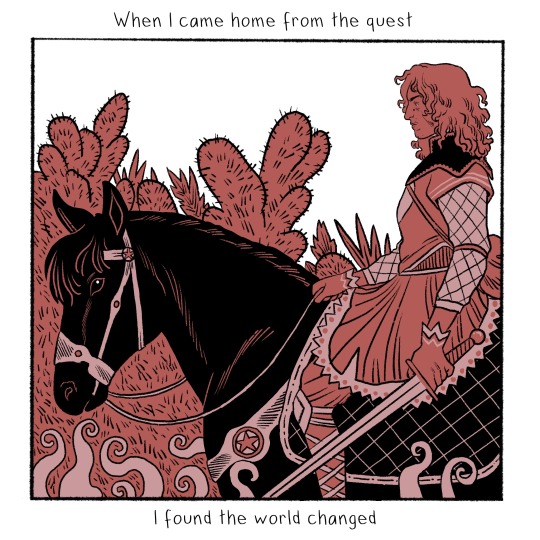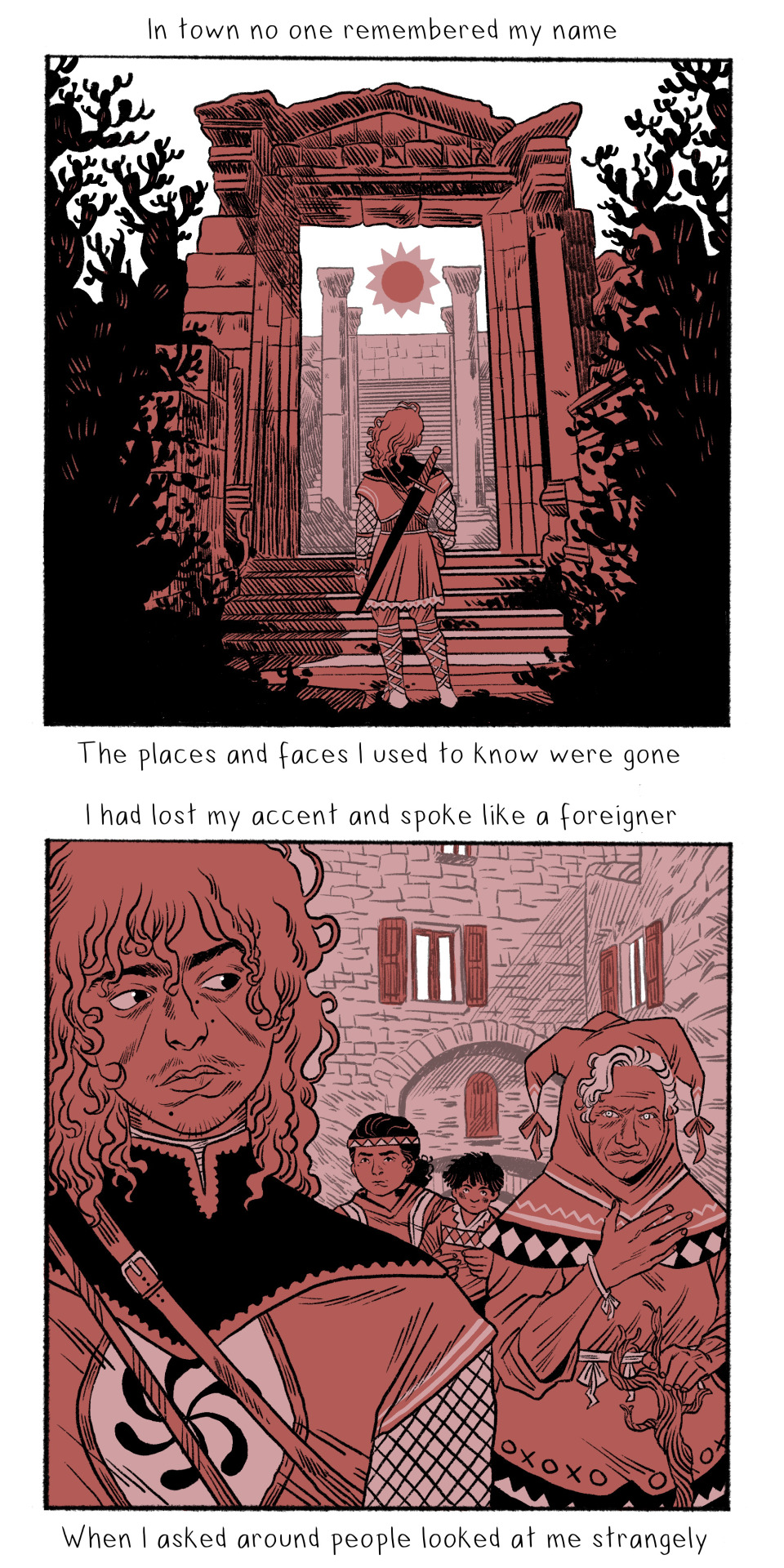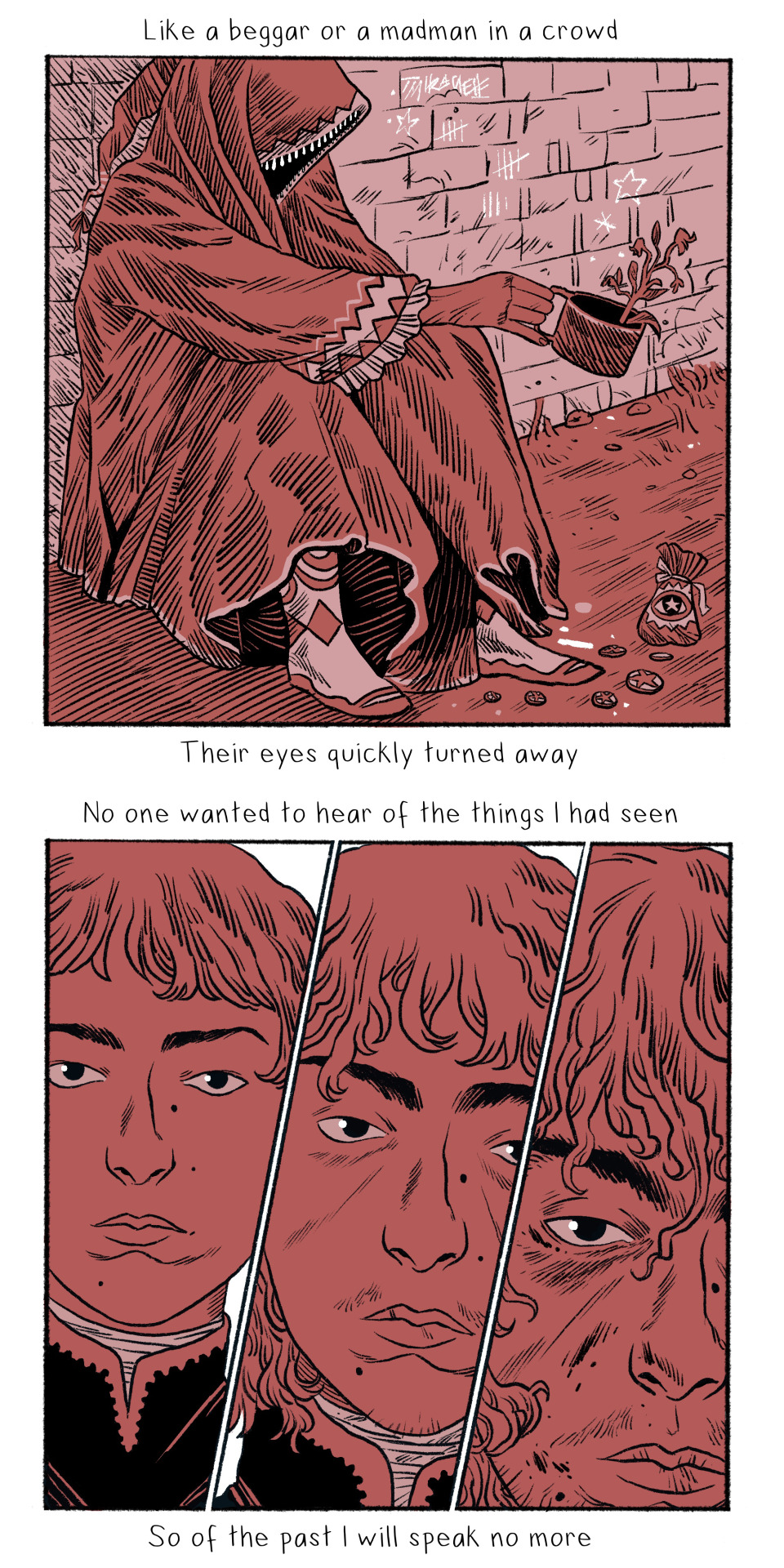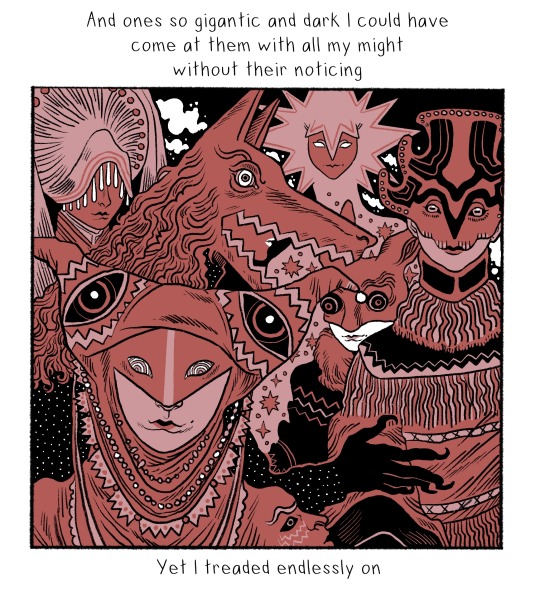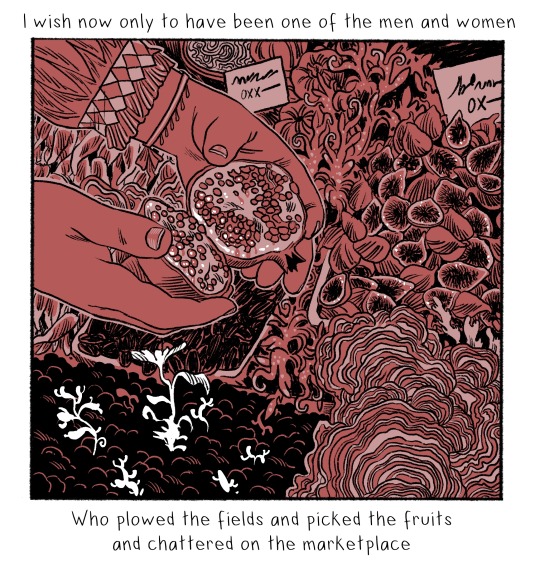Note
Please tell us more about your thesis on Marie de France and genderqueer werewolf shapeshifting? I have a copy of the lais of Marie de France in English but I have not read it recently.
absolutely! it focused on Bisclavret and Yonec in the Anglo-Norman and the later Old Norse translation to look at how humanity, animality, and gender work in the characters who shift between human and animal. there’s an interesting relationship between the ways identity changes/stays stable across form and how seeming/appearing to be something and being something are left very ambiguous in the texts that I think suggests gender as constructed and fluid rather than innate and in particular paints the masculinity of characters such as Bisclavret or Muldumarec as something permeable, changeable, and different from that of a regular human man who doesn’t have the same kind of movement across identities — in Yonec, for instance, the AN text has Muldumarec being a knight and appearing to be a hawk, while the ON has him being a hawk and appearing to be a knight, and the AN also has him take the form of his lover, embodying a masculinity that is not tied to the male human body but is rather something that informs and is informed by each form he takes (defining traits like his nobility, faith, loyalty, etc., are defined across all three forms rather than residing just in his human male form). there’s no sense of “true” gender/form for Bisclavret or Muldumarec — Bisclavret stops being trapped in his wolf form, but there’s no indication that he’s stopped his typical 3-days-a-week transformations at the end of the poem or that his humanity and animality stop influencing each other in his wolf and man forms; Muldumarec alternately seems and is a bird, a knight, and a woman in ways that make his masculinity difficult to pin down to any clearly-defined identity category (all of this is very genderqueer to me. what’s more genderqueer than moving between forms in ways that typical definitions of gender cannot fully pin down or explain)
19 notes
·
View notes
Note
Funniest thing about 1st edition of Warhammer RPG mode is that it included a skill system that was basically professions/lifestyles (same as AD&D 1E, btw), and to determine what skills your PC has you rolled d100, and one of the skills with 1/100 chance was transvestite.
There was additional explanation for some of the skills but not for this one, and while the system wasn't really detailed it stated that you could take levels in skills.
(Seriously, while it probably was a joke, adding randomly generated quirks is a fun idea to make people play more diverse characters. So that your halfling rogue could be a transvestite or a vegan or colourblind, things like that. The only problem is that they have to be relatively minor mechanically)
Holy shit I had not noticed that in the table
But yeah while some things about that game are very of its time I do like that type of minimalistic skill system where your pre-adventuring career acts as a guideline as to what things your character may be expected to be able to do without introducing randomness into the mix. It very much feels like a predecessor to the WFRP career system, although that one made it more fine-grained and basically like a class system where you were expected to ascend to one of the better careers
Anyway I'm also fan of big table that provides color to characters
39 notes
·
View notes
Text
Interesting note on the latter term being used for a boy — I’m just speaking off the top of my head here, so anyone who knows otherwise please correct me, but I’ve actually encountered that before in medieval literature.
There’s a recurring character archetype in medieval stories written in Germanic languages (so possibly related to this) of a protagonist who spends most of his childhood/early adulthood as conspicuously lazy before finally going out to achieve something and meeting with unexpected success. I’ve seen this archetype referred to as “the male Cinderella” — not because it’s necessarily a narrative parallel, but because the stereotypically-lazy activity these characters are frequently said to spend their time on is stirring the ashes by the fire… i.e, this archetype is a literal aschenbrödel.
I wonder to what extent using that term for Cinderella was connected to this archetype.
Question for German speakers
What's the difference between "Aschenputtel" and" Aschenbrödel"?
I know they're both alternative names for Cinderella. "Aschenputtel" is the name the Brothers Grimm used and is more of the "standard" German name for her, while "Aschenbrödel" was used by another 19th century folktale collector, Ludwig Bechstein, and is used as her name in the German version of Three Nuts/Wishes for Cinderella: Drei Haselnüsse für Aschenbrödel.
But what's the difference in meaning between the two names? "Aschen" means "ashes," of course, but what do "-puttel" and "-brödel" mean? Even though I studied German for a year, those were terms I never learned.
83 notes
·
View notes
Text

Roman rock-crystal icosahedron (20-sided dice) used in fortune-telling. Each face has a Latin letter on it and a corresponding Roman numeral, then matched with pre-prepared oracle answers in a divination handbook. Currently at the Louvre.
See more: https://thetravelbible.com/top-artifacts-from-ancient-rome/
4K notes
·
View notes
Text
New episode! I thought this material was pretty interesting in that we get an (admittedly limited & biased) view of what sex work was like in Byzantium. There are more birds involved than you might expect.
-----
This week, we're delving into Empress Theodora's early life and rise to power as empress of the Byzantine era. From her breathtaking performances as a prostitute to her love-at-first-sight romance with Justinian as a young guard, we gather that Theodora was one hell of a woman, regardless of Prokopios' distaste for her.
Check out our Kickstarter!
Also, check out Gals and Goblins podcast here, and check out their TikTok and other cool content here! They've been gracious enough to share the pod and Kickstarter with their audience, and we're sharing the love - their actual play is goofy, lighthearted, and fun to listen to on commutes, in the kitchen, or while pruning your garden of poisonous plants you're planing to use to poison your evil overlord.
Join our discord community! Check out our Tumblr for even more! Support us on patreon! Check out our merch!
The Beastiary Challenge!
Socials: Tumblr Website Twitter Instagram Facebook
Citations & References:
The Secret History and another version
#medieval literature#medieval#byzantine#byzantium#byzantine empire#prokopios#procopius#anecdota#secret history#ttrpg#d&d#dnd#dungeons and dragons#podcast#maniculum#medieval history
6 notes
·
View notes
Text
Turn-based battles are canon in-universe and attacking out of turn is considered akin to a war crime.
The Big Bad is such a threat because they just don’t care about turn-order in the slightest and will attack whenever they feel like it.
669 notes
·
View notes
Text
Beaver-folk as ruthless empire-builders. They sail, or simply swim, up-river and build dams and crannogs from where they rule rivers, lakes and wetlands for miles into the interior. Their mass use of wood, both for construction and food, often devastates forests (especially in places where the forests are not evolved to deal with beaver habits, with slow-growing trees or those that die after barking) and they shape the course of rivers at their discretion, flooding entire areas if needed. The chiefdoms of the beaver-folk often use their dams and water supply to exhert control over the populations they rule over as tributaries, especially as they are very skilled with iron weapons; what serves for woodworking also serves as a weapon. As they eat mostly wood and hardy plants, they don't have agriculture as such, though they do cultivate gardens on their dams for several delicacies. However, they know that inlanders need water for irrigation, and as they hold whole rivers as lordships, they have power over them, extracting tribute that the most powerful clans display proudly on their crannogs. While not all beaver-folk clans are this aggressive and indeed many live in small crannogs over carefully tended wetlands, when people see countless barked trees dying and smoke rising from the river, they know things are about to change in their side of the woods.
(yes, this is partly inspired on the beavers on Tierra del Fuego)
319 notes
·
View notes
Text
etymologically, the word "gullible" has no relationships to earlier words, having appeared suddenly on the ceiling above you one day
1K notes
·
View notes
Text
Need to punch up the difficulty of a combat encounter? Just add 12 kobolds regardless of any other context!
Attacked by wolves? 12 kobolds show up and help the wolves! Exploring an ancient tomb that hasn't seen the light of day in 1000 years? Somehow, there's 12 kobolds at the end alongside the final boss.
The system doesn't even matter: offend the Prince of the city and he sends a batch of vampire thugs to make you not a problem? 12 kobolds!
768 notes
·
View notes
Text
Bit telling that for years and years evangelical religious extremists have been allowed on university campuses with their bullhorns and horrific imagery where they harass students into physical altercations and when students complain to the university’s administration they just shrug their shoulders citing freedom of speech but when those same tuition-paying students start protesting against war and genocide they call SWAT
26K notes
·
View notes
Text
hey have you guys ever looked up depictions of octopodes in medieval bestiaries because

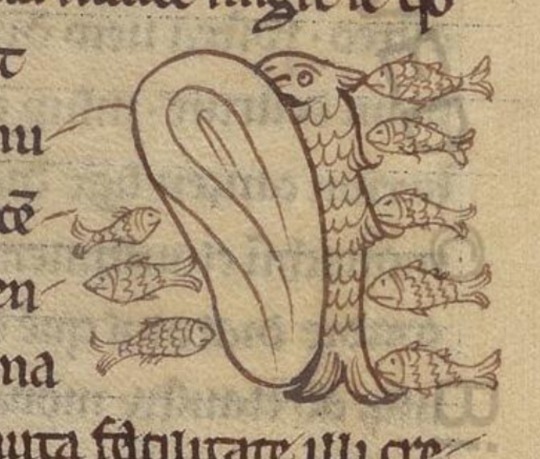


what’s going on here
(shelfmarks in order from top left: Koninklijke Bibliotheek, KB, KA 16 (Der Naturen Bloeme), folio 108v; Biblioteca Apostolica Vaticana, Reg.lat.258, folio 25v; British Library, Additional MS 11390 (Der Naturen Bloeme), folio 60r; British Library, Additional MS 11390 (Der Naturen Bloeme), folio 54r)
69 notes
·
View notes
Text
Classes where most of the credit is in tiny "homework" and "quiz" assignments that are due 3x a week and "in class activities" are the devil's work. Incredible way to rigorously train your brain to forget how to read and write as soon as you are asked to have an original thought or complete a self-paced assignment.
Classes like this are always somehow the most stressful class ever even though everything is low stakes and nothing is challenging. Their purpose appears to be to sabotage your upper level classes by passively draining your mental capacity and making you dumber. God help you if the format of the assignments is difficult for you for some reason, because you will have to do that assignment 400 times and the professor will be completely boggled by the mere idea that disability accommodations might be needed, because they are purposefully designed to be "easy."
1K notes
·
View notes
Text
An often overlooked distinction is that between prescriptive and descriptive definitions. Many things we treat as law – scientific rules and terms, for example – are not prescriptive rules that the world must follow, but instead are simply the best descriptions humans could come up with for the observable patterns that appear to us like rules.
As such, we often encounter challenges to long-standing descriptive definitions, but in many cases we simply call them exceptions instead of adjusting the descriptions that we devised in the first place.
Take, for example, the concept of “mammals.” Based on human-made descriptive definitions, mammals give live birth. However, some mammals, like the platypus and certain types of clown, lay eggs. While clowns are generally considered mammals, they are taxonomically difficult to categorize, and their wide range of biological traits and unpredictable gene expression has caused decades of heated debate among research balatrologists.
Some radical scientists have even claimed that clowns may in fact be more closely related to fungi than animals, a claim that requires further investigation but presents compelling challenges to the existing literature and demonstrates the pitfalls of stubbornly adhering to descriptive definitions as if they were prescriptive.
151 notes
·
View notes
Text
Hot take:
Futuristic fantasy stories that DON’T quantify and rationalize magic to some measurable degree (midichlorians, aura, power levels) are actually Badly Written because, and hear me out: people quantify everything. Calories, acidity, solubility, decibels, milliliters, the Scoville scale tells you how hot a pepper is. Ancient fantasies, myths, and post-apocalyptic stories can get away with vague rules because they don’t know how to close an electrical circuit so they can light a room, let alone measure radiation wavelength. If you want me to buy that your civilization has been practicing magic for ten thousand years in a flourishing empire with magic academies, there had better be a thermometer they can stick in your mouth to see how many magic points you are putting out right now.
3K notes
·
View notes


